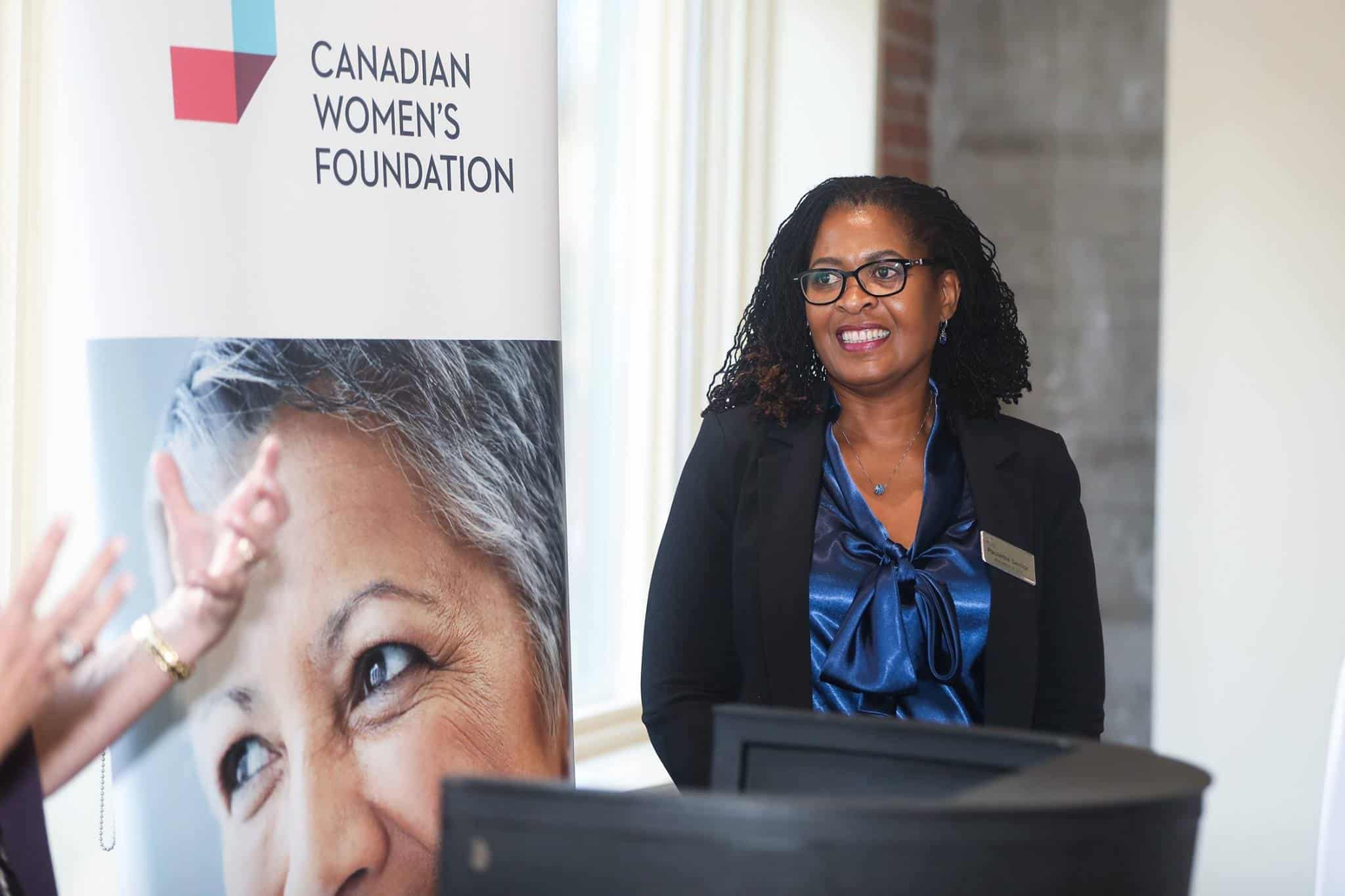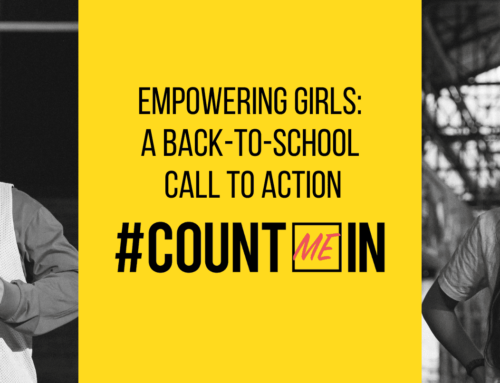“Hey Mom, what’s the glass ceiling?”
“Is it true there’s a motherhood penalty?”
“What about the leaky pipeline — what’s that?”
Imagine a future where girls don’t hear these terms because they don’t exist.
That vision is inspiring us as we mark International Women’s Day 2019. This year’s theme, #BalanceForBetter, calls attention to progress we’ve made toward a gender-balanced world, as well as the need for advancement, particularly when it comes to leadership. The statistics on women’s leadership in Canada tell us that gender-equal representation in business and politics remains elusive.
To make it reality, we’ve got to look beyond who’s rising from middle management to the C-suite. In fact, we’ve got to look much further back — to the start of the leadership path. From a young age, girls start to face obstacles disguised as social norms that discourage them from seeing themselves as leaders. The good news is that these are obstacles we can ALL help to remove—and now is the time to do it.
Obstacle 1 – Socialization: Even though research suggests girls are as predisposed to leadership as boys, socialization influences their perceptions of their own potential. The toys and clothes targeted at them often reinforce traditional stereotypes. While Barbie is taking on more Ken-dominated career paths, one study suggests that girls who played with Barbies (whether they were fashion Barbie or doctor Barbie) saw fewer career options for themselves than girls who played with Mrs. Potato Head toys.
Solution: Toys and clothes are part of a bigger socialization picture that includes family, peers, and community, as well as social, cultural, and educational structures. But parents can help children understand and question these forces from an early age. Adults can also question their own biases and consider how they can do more to build girls’ self-esteem. In conversations, for example, there are many confidence-boosting alternatives to telling girls they look pretty.
Obstacle 2 – Media representation: Though media representation of women and girls is improving, it often reinforces stereotypes of women’s roles as secondary. When it comes to family films, male lead characters far outnumbered female leads (71.3 per cent compared to 28 per cent) between 2007 and 2017, according to the Geena Davis Institute on Gender in Media. Along with the gender gap, the report revealed even wider gaps for LGBTQ leads, lead characters of colour, and lead characters with disabilities.
When they are represented in the media, the women and girls we see are often objectified or hypersexualized, suggesting that thinness and beauty are pre-requisites to other goals. In fact, more than half of girls ages 6 to 8 feel their ideal body is thinner than its current size.
The preoccupation with appearance encroaches on girls’ mental health and affects their performance. In one study, girls who were most concerned about how they looked scored the lowest in a ball-throwing test. Women’s representation in media contributes to girls’ sense of self-doubt, which can affect their ability to confidently take on and address challenges in their lives and leadership roles.
Solution: Parents and educators can encourage children to use media to counter stereotypes and encourage body confidence. The Canadian Women’s Foundation funds programs that encourage girls ages 9 to 13 to create their own empowering messages. When it comes to filtering what girls watch, Common Sense Media is one resource that evaluates family films for positive role models and representation. There’s also the Bechdel test, which lists films based on whether they include two named women characters who talk to each other about something other than a man.
Obstacle 3 – Gender bias: By their teens, many boys and girls appear to have biases against girls as leaders, reports Leaning Out: Teen Girls and Leadership Biases, a study from Harvard University’s Graduate School of Education. When teen girls were asked who is more effective in specific professions, almost a quarter of respondents—23 per cent—preferred male over female political leaders. Just 8 per cent of girls preferred female political leaders, with 69 per cent reporting no preference.
When teen boys were asked, 40 per cent preferred male over female political leaders. Only 4 per cent preferred female political leaders and 56 per cent expressed no preference. Looking at business leaders, 36 per cent of teen boys preferred male business leaders, while 6 per cent preferred female leaders.
The Leaning Out report also found that, on average, mothers who were presented with student councils expressed stronger support for those led by boys than those led by girls.
Solutions: The report underlines how important it is for everyone—not only girls and parents—to understand how gender inequality influences them. In the teen healthy relationship programs funded by the Foundation, teens of all genders discuss how inequality plays a role in their lives, and use this knowledge to develop healthier relationships.
While it’s one thing to deal with explicit biases about gender—those we’re aware of—it’s another to address implicit biases, which are unconscious beliefs. But various tools have emerged to help people understand implicit bias when it comes to gender, race, and sexual orientation. You may be surprised to learn about your own blind spots; and that awareness can lead to behaviour change.
Aside from confronting biases, the Harvard study recommends offering more girls programs and strategies to build and practise leadership skills. In many of the girls’ programs funded by the Foundation, girls have the opportunity to express their opinions in safe spaces, lead program activities, and organize community projects.
Obstacle 4 – Lack of role models: As they grow up, girls will notice gender imbalances around them. They will observe that although similar numbers of women and men get university degrees and enter the workforce, the ratio of women decreases as you go up the leadership ranks. In other words, the pipeline leaks. And this contributes to beliefs that women either aren’t cut out for these roles or don’t belong in them.
Solution: The vast majority of professional women surveyed by KPMG (82 per cent) believe that access to women leaders and the opportunity to network with them can help build the confidence needed to navigate toward leadership roles. To that end, we can help girls and young women experience mentorship, whether in their own peer groups or with women in the community. Many of the girls’ programs funded by the Foundation include a mentorship component that offers younger participants the chance to be mentored, and older girls the opportunity to practise leadership skills as a mentor. These relationships play a key role in helping girls build confidence and see their potential.
Obstacle 5 – The majority of women can’t see themselves as leaders: By the time women enter professional environments, there’s a disconnect between their leadership aspirations and perceived ability to get there. Although six in 10 women surveyed by KPMG said they aspired to a senior leadership role in a company or organization, the same ratio said they found it hard to see themselves in those roles.
Solution: Re-evaluate our perception of leadership. Many women don’t see themselves in leadership because it has traditionally been viewed as “command and control”, rather than being collaborative and non-hierarchical. The Foundation promotes an approach to leadership that is inclusive, welcomes diversity, and is based on the idea that the best solutions often come from those closest to the problem—rather than those at the top. You can help spread the word by sharing this “Re-thinking Leadership” poster, by illustrator Katy Dockrill, at your workplace.
Obstacle 6 – The motherhood penalty: Research shows that women who have children may encounter a perceived lack of competency or commitment at work, and therefore receive fewer opportunities for advancement or leadership. Even if they don’t experience this discrimination, mothers may opt out of pursuing leadership because their career field or workplace make it difficult to balance being competitive at work with being caregivers. In fact, research shows that girls anticipate caregiving roles will impact their futures as early as middle school: eight times as many girls as boys thought they would need to stop work temporarily to care for young children.
Solution: The motherhood penalty is an example of how society places higher value on competition than on caregiving—both of which are “complementary human drives,” says author and policy analyst Anne-Marie Slaughter. Addressing this imbalance, Slaughter says, calls on employers and policy makers to implement more flexible work environments, social supports, and policies to support both women and men in caregiving roles.
The time is now
Do you want girls in Canada to grow up without encountering a glass ceiling — no matter how high they rise, or whether they choose to become parents? To achieve that, we all have a role to play in our spheres of influence: in business, in politics, in media, in education—in every area that touches our daily lives.
Along with removing obstacles to women’s leadership, we can collectively take action to cultivate more supportive work environments and insist on true gender equity that will benefit all Canadians. The time is now—we have the public momentum to effect real change for future generations. So let’s transform this energy into action!
You can sign and share this open letter to let executives at your workplace know where to get started. If you’re already in a leadership role, you can sign the letter as a pledge to better support diverse women at your workplace.
There are many other ways to take action on International Women’s Day: Check out our action page to find out how you can help #BalanceforBetter.
Learn More:
On International Women’s Day, How Are You Taking Bold Action?
7 Confidence-Boosting Books for Girls
No, Moms, the gender pay gap is not on us
Take Action:
Sign up for our e-newsletter to have our latest stories and resources sent to your inbox.
Follow us on Facebook and Twitter to join a national conversation about empowering girls.







